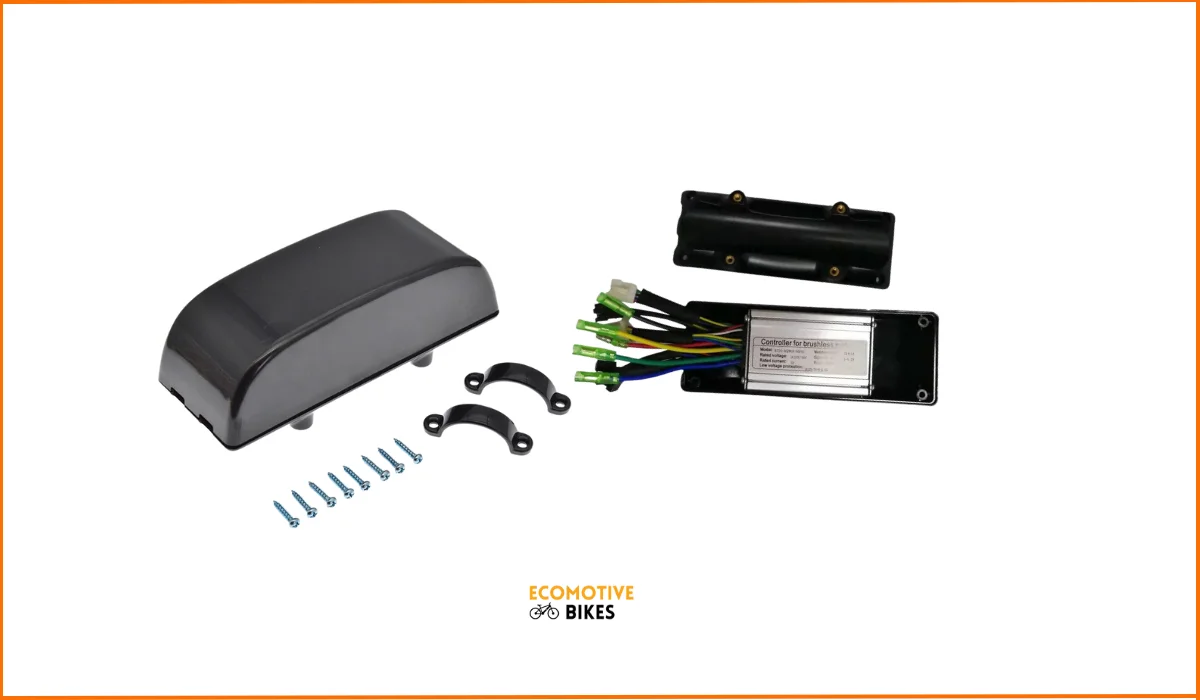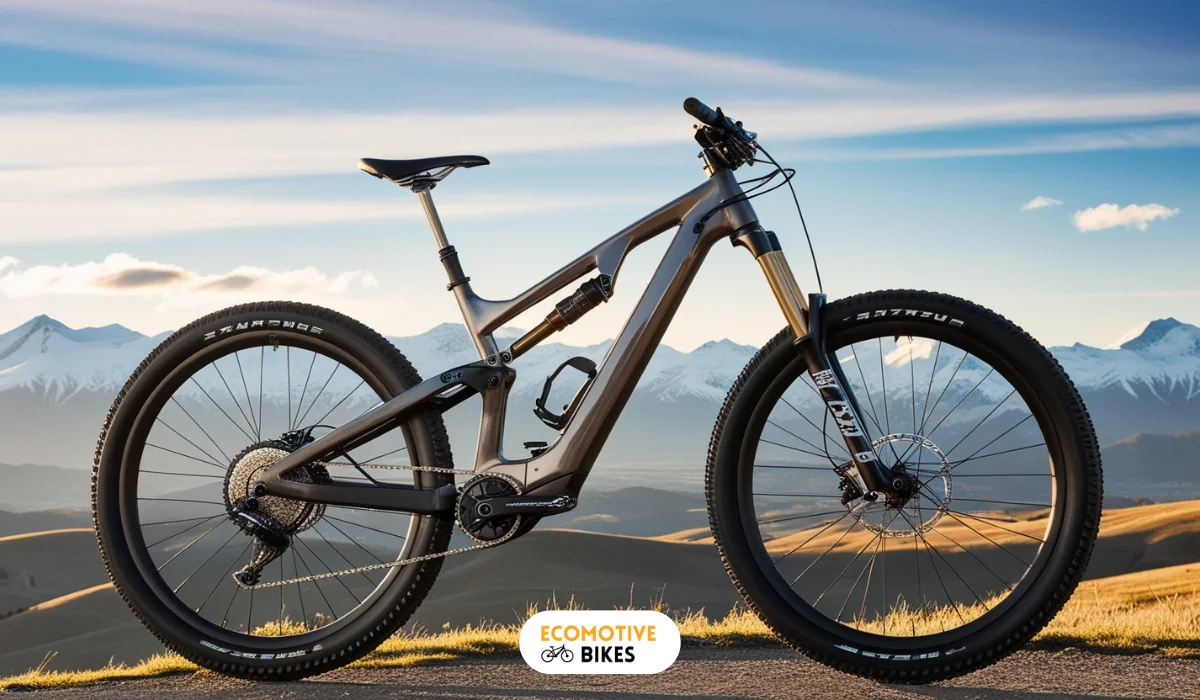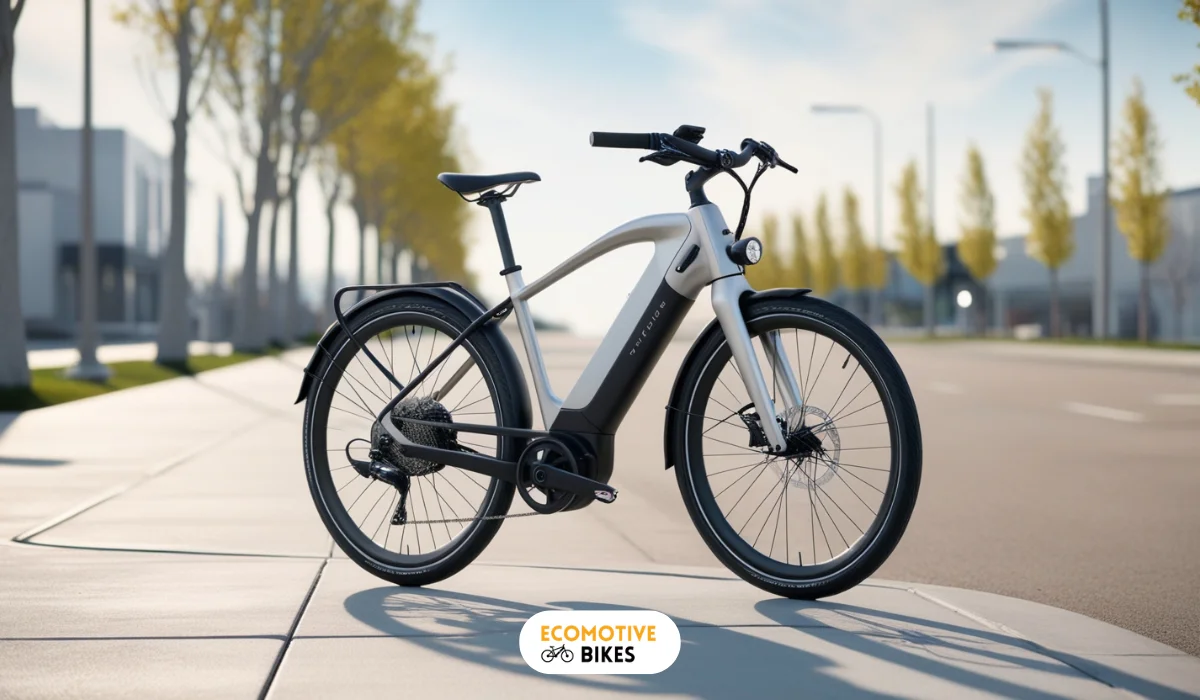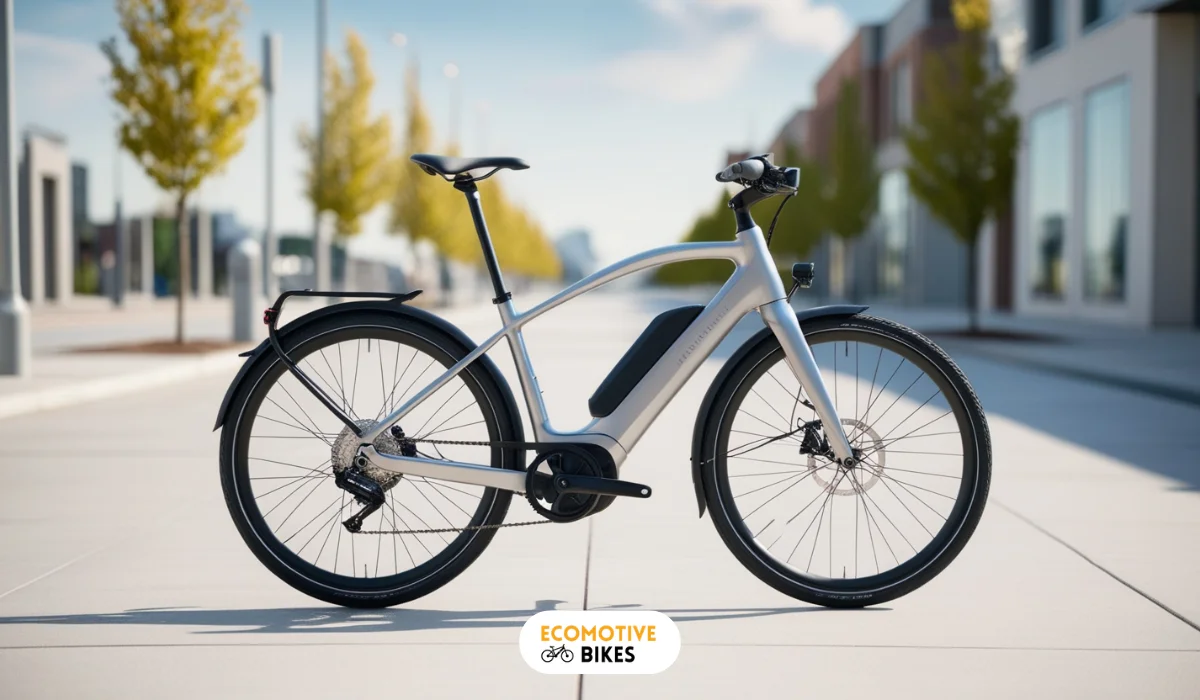How to choose an e-bike motor controller for better performance
Learn how to choose an e-bike motor controller by considering power rating, voltage compatibility, control features, and safety mechanisms for a smooth riding experience.
Table of Contents
Related Articles:
E-bikes are taking the world by storm, and for good reason! But, as the popularity surges in, selecting the right motor controller becomes increasingly essential for optimal performance. You must know its key functionalities and parameters.
This guide will rip through the complexities and parameters of e-bike motor controllers and will tell you exactly how to choose an e-bike motor controller.

Basics of e-bike motor controllers
E-bike motor controllers function as the central processing unit (CPU) of your electric steed. They meticulously regulate power delivery, dictating speed and acceleration based on your throttle input.
Additionally, these controllers incorporate vital protection mechanisms safeguarding the battery, motor, and other electrical components from potential damage caused by over-voltage, over-current, and low-voltage situations. Selecting the most suitable motor controller is paramount for maximizing performance, safety, and overall e-bike longevity.
Types of e-bike motor controllers
Some of the common types of E-bike motor controllers include brushed DC motor controllers, brushless DC motor controllers, and BLDC controllers with Hall sensors. Each type has its own unique features and applications. Let’s look into the details of each type below.
1. Brushed DC motor controllers
The brushed DC motor controllers are simple in design, utilizing keys to change the current supplied to the motor. They are commonly used on small electric vehicles like scooters and electric bicycles. These controllers are user-friendly and favored by enthusiasts for their simplicity.
2. Brushless DC motor controllers
Brushless DC motor controllers are highly efficient and reliable, making them a popular choice for E-bikes. The operation and service of these controllers are straightforward, providing smooth control over operations. They offer higher efficiency and are known for their durability.
Brushless controllers come with three phases controlled through a set of keys and at least two transistors (key/MOSFET) per phase. These controllers are ideal for applications where efficiency and reliability are key factors.
3. BLDC controllers with hall sensors
On the other hand, BLDC controllers with Hall sensors utilize Hall Effect transducers to determine the position of the rotor. These sensors assist in optimizing the motor’s performance by determining the speed and position of the rotor accurately. These controllers offer stable operation and increased starting torque.
Controllers with Hall sensors provide more precise control over the motor’s performance, making them a popular choice for E-bikes requiring a high level of accuracy and efficiency.
4. Additional motor controller types:
Apart from the main 3 types of motor controllers, we have some additional types. Here are the various types of e-bike motor controllers, which differ based on the motor, bike features, and functionalities like regenerative braking:
- Pedal-assist (PAS) controllers: These controllers work with pedal sensors to adjust motor assistance according to the rider’s pedaling. The rider can choose from different levels of support depending on the desired assistance.
- Throttle-based controllers: These allow riders to manually control the motor’s speed and power using a throttle, similar to a motorcycle. It provides direct control over the bike’s speed without requiring pedaling.
- Combined PAS and throttle controllers: Some e-bikes feature a combination of both pedal-assist and throttle controls, allowing riders to choose between the two modes depending on their preference.
- Torque sensor controllers: These controllers measure the force applied to the pedals and adjust the motor assistance based on the rider’s exertion. This type of controller provides a more natural and responsive riding experience by modulating support in real time.
- Mid-drive controllers: Mounted at the center of the bike’s bottom bracket, these controllers distribute power efficiently and are well-suited for various terrains while maintaining good balance.
- Hub motor controllers: Designed for e-bikes with hub motors (located in the front or rear wheel), these controllers manage torque, speed, and power delivery to the motor.
- High-torque controllers: Ideal for e-bikes used for heavy-duty tasks such as cargo transport or off-road biking, these controllers provide extra torque for more powerful performance.
- Smart controllers: These come with advanced connectivity options like Bluetooth and Wi-Fi, allowing users to link the controller to a smartphone app for real-time monitoring and performance adjustments.
- Firmware-programmable controllers: These advanced controllers allow users to fine-tune performance aspects such as acceleration and top speed by updating the firmware.
- Regenerative braking controllers: These controllers convert the energy generated during braking into electrical energy, improving overall energy efficiency and extending battery life.
Key functions of e-bike motor controllers
E-bike motor controllers perform a multitude of critical tasks, ensuring a seamless and safe riding experience. Here’s a breakdown of their core functionalities:
- Power regulation: Based on the rider’s input and the selected assistance level, the motor controller determines the amount of electrical power to supply to the motor. This ensures the motor operates efficiently under different riding conditions.
- Over-voltage and low-voltage protection: The motor controller continuously monitors the battery’s voltage, protecting the motor from damage caused by over-voltage or low-voltage. It automatically shuts off the motor if the voltage reaches dangerous levels, either too high or too low.
- Speed control: By interpreting signals from pedal-assist sensors, throttle, or speed sensors, the motor controller regulates the bike’s speed. It ensures the bike maintains a consistent speed according to the rider’s input and assistance settings.
- Direction control: The controller governs the motor’s direction, allowing the bike to move forward or backward as needed.
- Battery management: It monitors the battery’s charge, preventing damage from overcharging or deep discharging. The controller optimizes energy flow, maximizing the battery’s lifespan and ensuring efficient energy use.
- Over-current protection: When the motor draws too much current, the controller reduces the flow to protect the motor and the field-effect transistor (FET), ensuring safe operation.
- Sensor integration: The controller connects to various sensors (e.g., pedal, speed, torque) and adjusts the motor’s output in real time for a smoother, more responsive ride.
- User interface: It manages the user interface, where riders can adjust settings, view data (such as speed, battery status, and distance), and control other functions.
- Communication interfaces: The motor controller handles communication interfaces such as USB or Bluetooth, allowing for firmware updates, customization, and integration with external devices or apps.
- Thermal management: To prevent overheating, the controller monitors the motor’s temperature and reduces power output if it becomes too high.
- Fault detection and protection: The controller detects system malfunctions and activates safety mechanisms to protect the motor and other components from damage.
- Regenerative braking: The controller manages regenerative braking by converting kinetic energy into electrical energy during braking and redirecting it to recharge the battery.
Related: Functions of an ebike controller
Factors to consider when choosing an e-bike motor controller
Choosing the ideal e-bike motor controller is akin to finding the perfect match for your bike. Here are key factors to consider when making your selection:
- Voltage and Power Compatibility
- Current Rating Compatibility
- Driving Types: Sine Wave vs. Square Wave Controllers
- Compatibility with Hall Sensors and Non-Hall Sensors
Voltage and power compatibility: Power is a crucial consideration when selecting an e-bike motor controller. Match the controller’s voltage to the motor and battery voltage for stable operation and increased reliability.
Current rating: Think of the current rating as the controller’s capacity to handle electrical flow. Consider that the phase current should align with the motor current to avoid overheating and component failure. It should be lower than the battery’s output current to prevent overheating and component damage.
Driving Types: Sine Wave vs. Square Wave Controllers: The operation and benefits of e-bike motor controllers differ based on driving types. Sine wave controllers offer smoother operation and efficiency for uphill tasks or heavy loads, while square wave controllers are more cost-effective but produce more noise and offer lower efficiency in specific situations.
| Voltage | Driving Types |
|---|---|
| Sine Wave Controllers | High efficiency.Low noise.Best for complex tasks like uphill tasks or heavy loads. |
| Square Wave Controllers | Cost-effective.Higher noise production.Suitable for general use |
Perceiving the differences between sine wave and square wave controllers can help in selecting the right one based on your specific requirements for your e-bike motor.
Compatibility with hall: Hall sensors provide a more precise and efficient ride. Opt for controllers compatible with Hall sensors if you prioritize control and smooth performance.
Technical specifications and compatibility: While it may seem intricate, understanding technical specifications boils down to ensuring all components work together harmoniously. Match controller voltage to motor voltage, comprehend the power and current ratings, and select a phase current that aligns with your motor’s capacity.
Phase current vs. battery current: A common misconception among new e-bike riders is conflating phase current and battery current. Understanding the difference between these two currents is crucial in selecting a controller. Phase current is one, which directly supplies the motor. It can exceed the battery current.
When selecting a controller, ensure its phase current rating aligns with the motor’s capacity. Exceeding this limit leads to motor overheating, insulation degradation, and potential short circuits damaging the motor windings. Standard e-bike controllers typically match these currents to prevent such component failures.
Additional features and configurations
For riders seeking customization and cutting-edge technology, e-bike motor controllers offer a range of advanced features:
- Programmable vs. Non-Programmable Controllers: Programmable controllers empower you to fine-tune settings like voltage and power output, ideal for tech-savvy riders who crave ultimate control. Non-programmable controllers offer a set-and-go approach.
- Dual-Mode Controllers: Embrace versatility with dual-mode controllers. They can switch between sensor-based Hall sensor mode and sensorless operation, providing a smoother transition and enhanced performance for diverse riding scenarios.
- Advanced Control Functions: Advanced control functions in e-bike motor controllers enhance the overall riding experience. Here are some key features to look out for:
- Regenerative Braking: Recycles energy during braking to extend battery life.
- Cruise Control: Maintains a constant speed without throttle input.
- Smart Assist Levels: Customizable power assistance settings based on riding conditions.
To take your e-bike riding experience to the next level, look for controllers with advanced functions like regenerative braking, cruise control, and smart assist levels. These features provide more control and efficiency, enhancing your overall riding experience.
Final Word: How to choose an e-bike motor controller
Choosing an E-bike motor controller is a critical decision that can greatly impact the performance of your electric bike. Factors such as voltage and power compatibility, current rating, driving type, and sensor requirements. By selecting the right controller for your specific motor and battery setup, you can ensure optimal efficiency, stability, and reliability for your e-bike.
Take the time to research and evaluate all aspects before making your final decision to enjoy a smooth and enjoyable riding experience.





